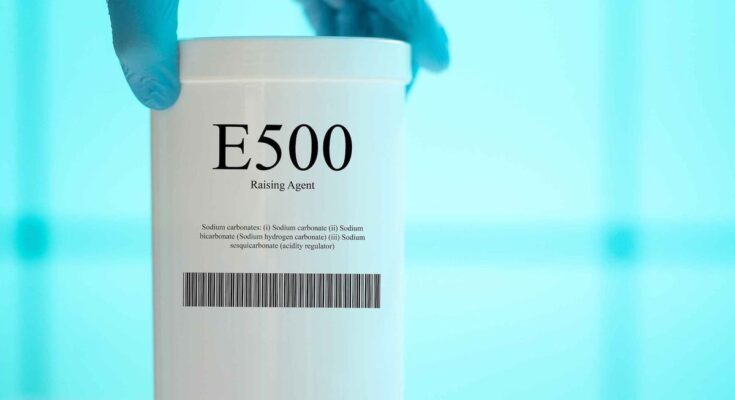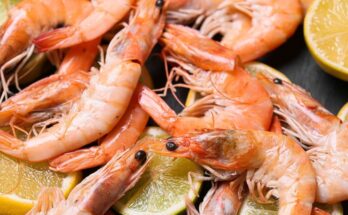What is behind the E500 code? What is this additive used for and is it problematic for human health? The answers from Anthony Fardet, researcher in preventive and sustainable nutrition and author of “Stop ultra-processed foods!” published by Thierry Souccar and Claudine Plumail, dietician and nutritionist.
What is code additive E500 or sodium carbonate and what is it used for?
Also known as sodium carbonate or soda, E500 is one of the additives that is both a taste modifier and a texturizer. It comes in the form of a fine white powder capable of absorbing humidity from the air. It is an additive very commonly used in the food industry. “It is mainly used as an acidity regulator, a leavening agent and an anti-caking agent.” indicates Claudine Plumail. Sodium carbonate can also be used as a stabilizer in processed foods to maintain their texture and consistency.
In what foods is it found?
Given its many functions, sodium carbonate is an additive found in a wide variety of industrial products. It is often used as a leavening agent in baked goods such as bread, cookies, muffins and cakes. It helps to make the dough rise and give a light and airy texture to the finished products. It is also used in the field of pastry, in particular biscuits, appetizer crackers, waffles and pancakes to make them light and crispy. Some types of soft drinks may contain sodium carbonate to improve their taste and fizz.
Soda ash may be added to some chocolate products, such as candy bars and candies, to help control texture and consistency.
It is sometimes used in dairy products such as yogurt and ice cream to stabilize the texture and prevent separation of ingredients.
Some pasta and grain products, such as pizza dough and breakfast cereals, may contain sodium carbonate as a leavening agent.
Finally, sodium carbonate may be present in a variety of processed products such as canned soups, sauces and prepared meals, breaded fish to help control their texture and consistency.
E500: is this food additive halal or haram?
In Islam, foods are considered halal if they follow the dietary principles established by Islamic law. As an inorganic mineral chemical substance without animal origin, additive E500 is considered halal.
Is E500 dangerous?
E500 considered safe when used in accordance with good manufacturing practices and use levels permitted by regulatory authorities. It is admitted into the organic food sector in the European Union. “However, consuming it in very large quantities can cause adverse effects, including intestinal irritation, vomiting or diarrhea.” adds the dietitian.
“And just because an additive alone poses little or no problem for health does not mean that its consumption is safe. Combined with other additives, it can become problematic: this is what we call the cocktail effect.” indicates Anthony Fardet, who nevertheless recommends limiting foods containing several additives as much as possible.
What is the E500 ii?
E500 ii designates soda or sodium bicarbonate, with the formula NaHCO3, unlike Sodium Carbonate E500(i), with the formula Na2CO3. Sodium bicarbonate is more commonly used in household and food applications, while sodium carbonate is primarily used in the food industry.
NO to diets, YES to WW!
What are the effects of additives and how are they classified?
Food additives are classified into 9 categories depending on their role:
- Food colorings, which can be of natural or synthetic origin;
- Preservatives to extend their shelf life;
- Antioxidants to prevent the oxidation of fats in foods;
- Sweeteners to give a sweet flavor to foods without adding sugar;
- Emulsifiers to stabilize mixtures of ingredients;
- Texturing agents (thickeners, gelling agents, stabilizers and bulking agents);
- Flavorings and flavor enhancers;
- Acidifiers to regulate acidity;
- Leavening agents added to baked goods to help dough rise.
But beyond this official classification, we can distinguish two categories of additives: so-called cosmetic additives which include all texture agents, emulsifiers, colorings and flavors and preservative additives. “Cosmetic additives are not essential and artificially modify the color, texture and taste properties of foods. Their presence in a food testifies to its degree of processing. The more there are, the more the food is processed. The E500 is one of them. Preservative additives are less problematic, they are used to optimize the conservation of an industrial food” explains Anthony Fardet.
What additives are prohibited?
Food additives that are not explicitly authorized in Europe are considered prohibited. The list is therefore non-exhaustive since currently, 320 additives are authorized in Europe, while – for example – some 450 are authorized in Canada. The list of additives authorized in Europe is available on the website of the Ministry of Agriculture and Food Sovereignty.





